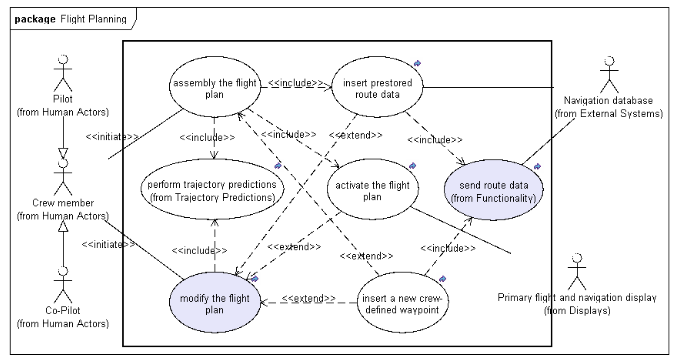AVIONICS
Technology Projects on Avionics
Flying High with Clear Requirements: Why Standards Like DO-178C Matter
As a requirements engineer in the aviation industry, I understand the critical importance of robust requirements engineering. These aren't just a list of "nice-to-haves"; they are the foundation upon which the entire aircraft system is built. That's why standards like DO-178C are indispensable. Here are three key advantages:
- Safety First: Aviation is inherently risky. Software plays an increasingly critical role in modern aircraft, from flight control to entertainment systems. DO-178C mandates a rigorous approach to defining and verifying requirements, ensuring that software functions as intended and doesn't introduce unexpected hazards. This minimizes the risk of software-related failures that could compromise flight safety.
- Quality Takes Flight: Clear, unambiguous requirements lead to better-designed systems. When engineers have a precise understanding of what the software needs to do, they can develop more efficient and reliable solutions. This reduces the likelihood of costly rework, delays, and unexpected issues during development and operation.
- Efficiency in the Air and on the Ground: DO-178C promotes standardized processes and documentation throughout the development lifecycle. This improves communication and collaboration among engineers, designers, and other stakeholders. Clear and consistent requirements also streamline the approval process, accelerating development cycles and getting safer, more innovative aircraft to market faster.
In conclusion, requirements engineering standards like DO-178C are not just a bureaucratic hurdle; they are an essential ingredient for developing safe, reliable, and efficient aircraft. By prioritizing clear, well-defined requirements, we can ensure that aviation continues to be a safe and reliable mode of transportation for years to come.
As part of a technology project, we have developed an alternative, cloud-based approach. Traffic events are recorded and transmitted to the vehicles using low-cost electronics in the form of IoT cameras or IoT radar sensors that are installed in the infrastructure, i.e. in street lamps. This approach is cheaper and also allows to enlarge the limited sensor horizon of the vehicle.
MBSE improves the Avionics Requirements Engineering
Technologieprojekt, 2011 - 2014
Model-Based Systems Engineering (MBSE) is improving the way we develop complex systems, and avionics is no exception. By leveraging visual models and simulations, MBSE can significantly enhance the requirements engineering process, leading to safer, more efficient, and innovative aircraft.
Key benefits of MBSE in avionics requirements engineering:
- Enhanced Requirements Traceability: MBSE establishes clear links between high-level requirements and their subsequent breakdown into lower-level specifications, design elements, and ultimately, the implemented system. This ensures that all requirements are addressed and that changes are propagated consistently across the system.
- Improved Communication and Collaboration: Visual models provide a common language that transcends disciplinary boundaries, facilitating communication and collaboration among engineers, designers, and other stakeholders. This reduces ambiguity and misinterpretations, leading to more accurate and efficient development.
- Enhanced Verification and Validation: MBSE models can be used to generate test cases and simulate system behavior under various conditions, providing a more comprehensive and rigorous approach to verification and validation. This ensures that the final system meets all requirements and operates as intended.
Importantly, DO-178C explicitly allows for the use of Model-Based Development. This recognition signifies a important step forward in embracing modern engineering practices in the aviation industry. The following publications show how MBSE can be used for requirements engineering in avionic systems.

T. Weyrath, H. Schreyer, J. Sellen
Saving the Software Specification by Transforming the old SA/RT Models into UML. 2013. In: 5TH EUROPEAN CONFERENCE FOR AERONAUTICS AND SPACE SCIENCES (EUCASS). Munich.
Abstract: The avionic software of the military helicopters Tiger and NH90 has been developed since the 1990s. Their specifications are based on Structured Analysis / Real Time (SA/RT), a methodology that was state-of-the- art in the 1980s. But nowadays the tools for modeling SA/RT are no longer supported and the knowledge to understand and maintain the models is going to diminish over time. Hence, ways must be found to keep the expertise on the specifications, models and software for future work. One possible solution for this problem is a transformation of the existing software models from SA/RT to UML.
T. Weyrath, B. Schinnerl, F. Schöttl, H. Schreyer
A new UML tool-based Methodology for the Software Requirements Analysis. 2012. In: European Congress: Embedded Real Time System and Software (ERTS2). Toulouse. France.
Abstract: Current standards in avionic (e.g. DO-178C) and automotive (e.g. ISO 26262) address model-based software engineering techniques. Hence, it is obvious to deal with these techniques methodically in the corresponding development processes. This article describes a new UML tool-based methodology to create the software requirements analysis. The methodology is use case driven and uses natural language requirements as well as UML diagrams.